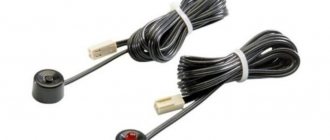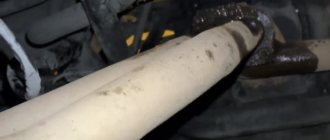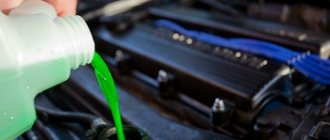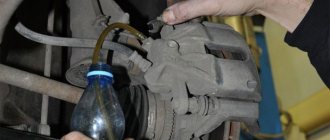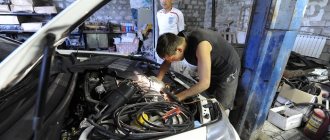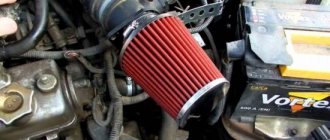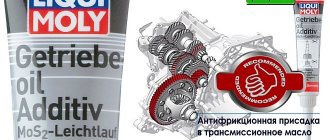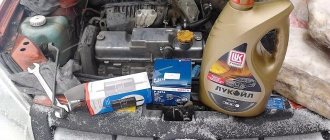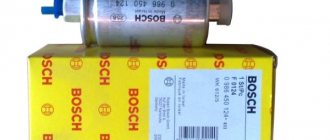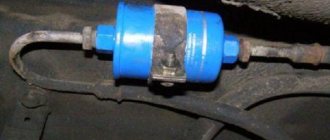The oil filter is an indispensable part of the units of any car; its job is to clean the engine oil from condensation, soot, random debris and other unwanted impurities that may form during engine operation. Oil, forming an anti-friction layer between rubbing parts, protects vehicle components, and also participates in cooling and cleaning systems. Because of this, foreign impurities gradually accumulate in it. They can be removed using an oil filter.
The Importance of Replacement
Let's start from afar. Motor oil is not only responsible for lubrication, but also ensures cleanliness in the engine. It catches all the “garbage” and collects it in the oil filter. It is worth noting that the additives contained in the oil withstand the harmful effects of exhaust gases for some time, but at some point the effect of the additives ends and the oil loses its properties. If the oil is not replaced, it will circulate in the engine, thereby destroying it.
All debris gets into the oil not only from the friction of engine parts, but also from the air, since the air filter is not able to completely catch all the dust.
Contaminants in the filter accumulate slowly and gradually, making the engine work less and less efficient, so unstable engine operation does not appear immediately, but when the consequences appear “loudly making themselves known,” it is in most cases too late to change the filter, since the engine will need under repair.
Let's sum it up
There are many ways to distinguish a Mann filter from a fake. You just need to be vigilant and also go through the consumables point by point when purchasing.
Such differences help the client not to make a mistake with his choice, as well as to identify sellers who sell counterfeits.
Try to contact trusted, reliable and certified stores. Here the risk of getting into counterfeit goods is less.
Which manufacturer's filters do you install on your car? Any experience with Mann? What can you say about their oil filters? Have you seen any fakes? How did you recognize it?
We look forward to your answers, as well as stories from personal experience.
That's all, so let's say goodbye. Thank you for your attention!
Subscribe, leave a comment, and tell your friends about the project!
Design and operating principle
There are 3 main types of oil filter designs:
- collapsible;
- non-separable;
- modular;
The most popular is the classic non-separable full-flow filter.
The main element of the oil filter is the filter element. Most often it is made from special corrugated paper impregnated with resins. This paper has high porosity, and thanks to impregnation, it is water and oil resistant. To achieve the maximum possible filter surface area with minimal dimensions, the paper is laid in a special way, usually in the form of a multi-beam star, and the quality of the filter directly depends on the quality of the filter element.
Principle of operation
Engine oil is supplied by the oil pump into the filter through holes on the filter cover. The oil is under high pressure, about 5 bar. This is not a problem for the filter element if the oil has an acceptable viscosity and is hot, and the cartridge (element) itself is relatively clean. However, if the filter element is already dirty or the oil is cold and thick, it will not always be able to pass through the paper filter as well as it should. The check valve is needed to prevent oil from pouring back after the engine is turned off, and so that when starting, the engine does not run without oil for those few seconds until the pump pumps oil back into the filter and creates the required pressure for the system.
By the way, this is one of the main reasons why the oil pressure light stays on for a long time when starting the engine.
Next, the oil is pressed under pressure through the filter element inside the filter, and the purified oil flows back into the vehicle’s lubrication system. To prevent oil starvation, in cases where the filter is clogged and cannot filter the required amount of oil, or it is necessary to sharply increase the engine speed, and also if the oil has become very thick in the cold, a bypass valve is provided. There is a spring and a rubber membrane inside; its pressure pushes it inward and the unrefined oil directly bypasses the filter element and enters the system back into the system.
Corrugated paper
This subclause implies the need to conduct a visual assessment of the quality of the filter paper. In the original part, the filter paper is smooth and very dense, since its main task is to prevent harmful impurities from penetrating into the engine.
It is also worth noting that the paper of this filter has traced edges, and the number of corrugations used is optimal for the successful completion of the task.
If we talk about fakes, the quality of the paper leaves much to be desired. The corrugations, in turn, are located unevenly, sometimes they stick together. Thus, this moment can already help identify a fake.
How to choose
How to distinguish a good filter from a bad one?! This task is not easy, because everything is hidden inside the housing and neither the filter element, nor the valves, nor the structure is visually visible.
The main principle of the designer: what’s ugly doesn’t work. The quality of the filter can be determined by external signs:
- the paint should be applied evenly and uniformly without smudges;
- inscriptions must be clear and even;
- the rolling of the body at the base should be smooth without creases;
Cheap filters try to save on everything, including external elements, but if these signs do not help on a particular filter, then remove the o-ring and look under it. On high-quality filters, rolling is used, and on low-quality filters, spot welding is used. If you see welding spots, this will be an additional sign of a low-quality filter.
This principle works for expensive, established brands. The same filter produced, for example, in Germany will be rolled, and one produced, for example, in China can be produced using a simplified technology and a sign of this will be welding
Inscriptions
The inscriptions of this “Filtron” filter cannot be felt if you run your fingertip or palm over the surface of the housing or any other structural element.
This is explained by the fact that the inscriptions are applied at the factory using a laser, preventing the letters and entire text from burning out. Manufacturers of counterfeit products avoid this technology, as it is quite expensive.
When to change
Oil filter life is a relative term. It is recommended to change it every time you change the oil, be it at an interval of 5,000 or 20,000 kilometers. Otherwise, some of the contaminated oil will return to the engine, after which changing the oil will partially lose its benefit in terms of maintenance, and imagine how efficiently a dirty filter will pass clean oil.
I would like to separately note that changing the oil at intervals of 20-30,000 km significantly reduces the proper performance of the engine in the future. If the car is under warranty, under moderate loads it is recommended to change the oil every 5000-7000 km - no matter what the dealer tells you, they have their own interests.
Which company to choose
When choosing the best automotive oil filter, you should analyze the top suppliers and also take into account the following product characteristics:
- Assortment - study the types of spare parts, their technical characteristics.
- Price Range – Make sure the price matches the quality. Leading companies offer products in both the budget and premium segments.
- Availability of a warranty agreement - inquire about the filter service life declared by the manufacturer and whether there is a warranty.
- Build quality - ask the sellers what materials were used in the production of the product, because... they determine its durability and reliability.
- Specialization - become familiar with the focus of the product. While some companies produce components only for foreign cars, others also work on the domestic market, supplying parts for Russian-made cars.
Manufacturers
Currently, more and more companies producing oil filters are appearing on the market. Which ones should you trust?
MANN FILTER
Oil filters MANN FILTER is part of the huge German group MANN + HUMMEL, created in 1941. Many years of experience contributed to the creation of MANN FILTER, which specializes exclusively in the production of filters for cars and trucks. The products are of high quality and often global automakers install them on their cars at the factory.
Bosch
Bosch is a leading manufacturer of automotive parts, founded in 1886 in Stuttgart. Bosch is familiar to most as a manufacturer of spark plugs and glow plugs, but over time the range of automobile spare parts has expanded and today the company offers car owners air and fuel oil filters that are of very high quality. Bosch oil filters are also used during “first assembly” by some automobile concerns.
Knecht
Knecht is a German company belonging to the Mahle group, which began operations in 1920 and initially specialized in the production of pistons. Over time, the company establishes the production of filters, and today, the Knecht oil filter is characterized by an excellent price-quality ratio, so every year the product finds an increasing number of its customers.
Filtron
Filtron is owned by the international automotive group Affinia Group. Its range includes filters for cars and trucks. Interestingly, the company has the most modern laboratory in Europe, which conducts research aimed at detailed control of products. Filtron is, first of all, an attractive price and high availability of spare parts.
In addition to the above-mentioned oil filter manufacturers, it is also possible to make a choice in the direction of such leading oil filter brands as Magnetti Marelli, Hengst Filter and Meyle. There is also a good selection of Ashika, Blue Print and Comline filters which, although not popular, are of good quality and competitively priced.
How to tell if your transmission filter is clogged and how to change it
Since getting a filter and assessing its condition visually is problematic (often you need to disassemble the entire automatic transmission), it is worth knowing about the signs of its contamination. Among them:
- when switching the gearbox, there is no push that accompanies the inclusion of speed, the car does not move in any direction;
- there is a push, but the car does not move or slips;
- untimely gear shifting (appears mainly at speeds above standard values);
- clutch slipping when changing gears.
Before replacing the filter, you first need to find out exactly where it is located. To do this, you should read the repair instructions for your car brand. After the filter location has been installed, you must:
- disassemble the gearbox housing (you will need a set of tools);
- remove the plates covering the filter;
- remove the old filter and install a new one in its place;
- assemble the gearbox.
Replacing the filter
Replacing the oil filter is a relatively simple operation. It can be disconnected separately or using a filter wrench. Some car models are equipped with filters with replaceable cartridges, meaning there is no need to replace the entire housing, just the filter cartridge.
After installing a new oil filter, you need to run the engine for a while and check the filter for leaks.
Remember that systematic monitoring and regular replacement of the oil filter will not only improve engine performance, but will help extend its service life.
I would also like to note that after replacing the filter, just like the oil, we do not have the opportunity to dispose of it ourselves, therefore, in accordance with the requirements of environmental protection and our health, we recommend that you take the filter to the nearest car service center, service station, machine-building enterprise or a car dealership that cooperates with oil filter recycling companies.
Rating criteria
When compiling the review, we considered spare parts from well-known brands, which are always on sale in auto stores. The quality of the materials used, the degree of purification, and compliance with the standards of engine manufacturers were studied. Reviews from car enthusiasts and the opinions of service station specialists were taken into account. The main attention was paid to the following characteristics:
- Appearance – the body should not have visible defects;
- O-ring - the part should not be freely removed;
- Paper thickness - affects the resource;
- “Accordion” quality – equal distance between folds improves functionality;
- Thread – the absence of burrs will ensure easy replacement and no leaks.
Weak bypass valve springs, signs of corrosion on the body, thin paper and uneven folds - components with such defects were excluded from our rating.
